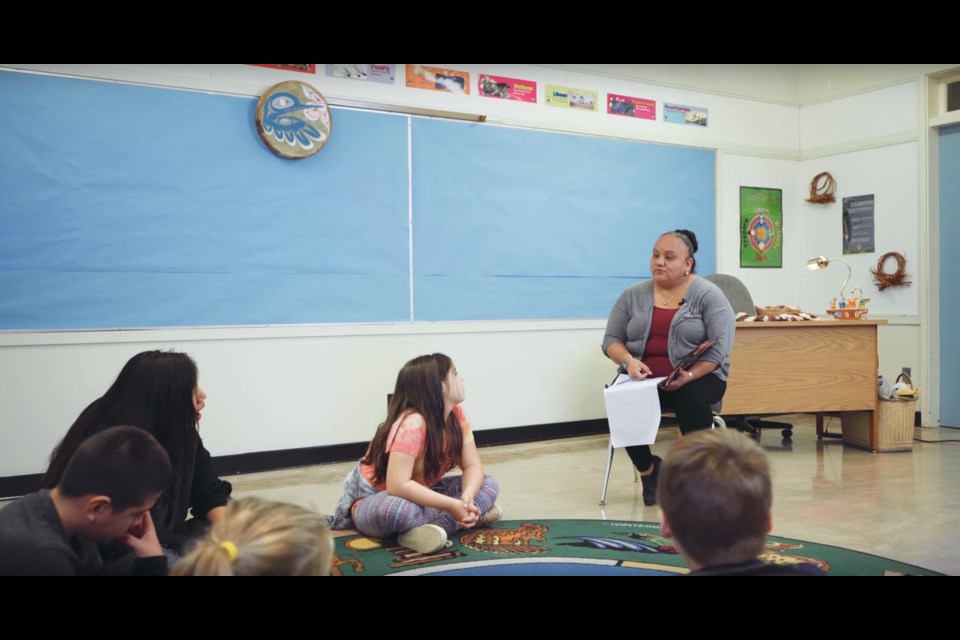The Cowichan Valley School District is working to preserve the Hul’q’umi’num language — spoken by Indigenous communities in the area — with a new program for children from kindergarten to Grade 7 that emphasizes its place in local culture.
The program focuses on the Hul’q’umi’num Word of the Week, a video series that presents words, phrases and other cultural material in schools, said Cowichan Valley School District chairwoman Candace Spilsbury.
Of the district’s 8,257 students, 1,606 or 19.5 per cent identify as Indigenous.
“We’re hoping things like the aloha greeting in Hawaii, which comes from their Indigenous language, will be adopted here as ‘’uy’ skweyul,’ which is a ‘hello, how are you? good day’ kind of greeting,” Spilsbury said.
Teacher Claudia Sylvester, a member of the Cowichan Tribes, said the students in the program are enjoying it.
“A lot of our teachers are now sharing it with their classes,” she said. “Apparently a lot of our staff are going to start using some of the Word of the Week videos during assembly time.”
Sylvester, who has a master’s degree in linguistics in Hul’q’umi’num from Simon Fraser University, said more exposure to the language is beneficial for the Indigenous community.
“Because a lot of our people in my Cowichan community and a lot of kids, they don’t get our language at home,” she said. “This is a good learning tool for them.”
The plan is to expand the program over time and share the concept with other school districts, many of which have expressed interest, Sylvester said.
A University of Victoria assistant professor in the Department of Indigenous Education applauded the school district’s effort.
“These kinds of programs are really important in terms of increasing community support and awareness of Indigenous language revitalization,” said Edosdi, a member of the Tahltan Nation whose English name is Judy Thompson. She’s also director of the language-reclamation department for her nation, located in northern B.C.
“Language is connected to culture is connected to our land,” she said.
With that comes a compelling reason for people, whether they are Indigenous or not, to learn about the traditional language and culture of the area where they live, “just to show respect,” Edosdi said.
“So I think it’s important for all Canadians to do that and I think this kind of program definitely supports that.”
Spilsbury said the program is part of the path toward reconciliation, after attempts to wipe out First Nations languages in the past.
“We’ve become even more aware of those systemic injustices and we’ve made wholehearted changes to try to help rescue and rejuvenate the language and culture here in Cowichan Valley.”
THERE’S A WORD FOR IT
Here are some common phrases in Hul’q’umi’num. To hear the pronunciations, click here.
‘uy’ netulh — good morning
‘uy’ skweyl — good day
‘uy’ snet — good night
hey’ewulh — good bye
tth’ihwum — please
huy ch q’u — thank you
namut kwu — you are welcome



